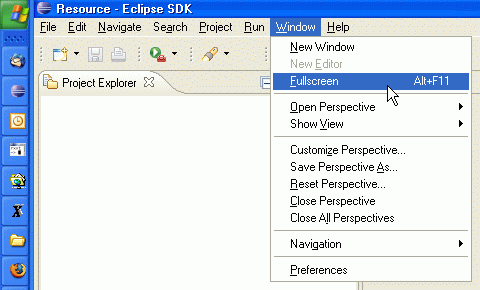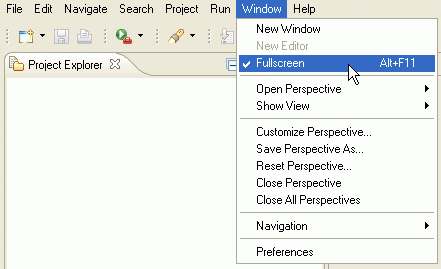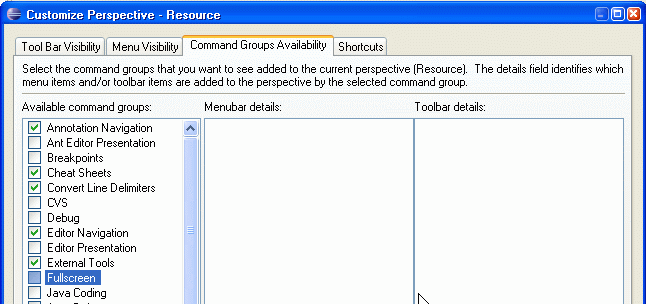Frank Gerhardt will host a session at ESE called
Symposium on Eclipse Foundation 2.0. Half a year ago I burned my fingers with my
"Eclipse Freeloader Award" blog entry. I got lots of negative comments and mails. I also got a few positive reactions. I decided not to continue talking about the future of eclipse.
Today, half a year later I look back and one interesting mail I wrote at that time is an email press interview. I decided to post it as I wrote it and I use it as my position paper for the symposium.
If this blog is to long just read the "The road construction analogy" section. This is the part of the interview I am most proud of....
The last months I have been heavily involved in an internal Wind River project based on eclipse and modeling, especially
Xtext and I have not had too much time to work on eclipse except bug reporting and asking stupid questions on the tmf newsgroup.
I have no idea how the community will react on that (very long) post.
Disclaimer: The text below was written half a year ago. It expresses my personal opinion at that time. I have not followed the recent developments and I might change my mind at any time... ;-)
My reply to an e-mail interview on April 18. 2009:
Q: If you were ready to give the freeloader award, who would be the three finalists for the "honor." Why these guys?
A: I had no particular company in mind. However, it is the general mentality of the industry that frustrates me: the attitude to take advantage of something like open source and not give back anything to the system. This is also known as the
"Tragedy of the Commons": Scott Lewis pointed out that the bigger a community is the less people participate:
"The Logic of Collective Action"
From an architectural perspective, there are things to be done in eclipse that should not been driven by direct interests of some companies but in the common interest of the community. IBM somehow took this role for a while, when they put some of their best people on the core of eclipse. At that time they were interested in the overall success of eclipse. Since some years they started removing quite some developers from eclipse (and put them on the Jazz/RTC project).
I believe there should be an independent group of developers driving eclipse. In my opinion it would be best if they would be paid by the community but act independently in the best interest of eclipse.
Now the questions is: why should companies put money into something that is free? If they put money in the system and their competitors do not, they have a competitive disadvantage. They support the community but they have no direct advantage. And in fact the company I work for (Wind River) just ended their membership (which is a sponsorship of the foundation) just recently.
That is why I was brainstorming about ideas how to stimulate companies to contribute. I am really afraid that eclipse will suffer in the future because the architecture degenerates over time and there is not enough manpower to keep modernize the architecture. Yes, there is e4 (the next generation of eclipse), but I am not 100% convinced that this is the solution.
To stimulate companies to give money/resources to support the
commons there has to be a benefit. If there is no positive benefit why would a company do that? So, my idea was to create peer pressure. One way to create peer pressure for companies to make them avoid negative press. A freeloader award would create negative pressure. No company would like to win the freeloader award.
Q: Other people I've spoken to, include Mike M. at Eclipse are much less concerned about the problem. Why do you see it as so serious?
A: Well, I probably have a different perspective than Mike. Mike sees the eco system and the new companies joining eclipse. My focus is more on the architecture of eclipse. So, the irony is that although eclipse is widely successful the underlying architecture ages and dissolves slowly. Partly because eclipse is stretched into so many different directions. It is never good for an architecture to go into too many directions at the same time. When eclipse started it was a platform for IDE like applications. It was later retro fitted to be the basis for rich client applications. The people ported eclipse to embedded systems. Then the it was used for the web and for servers.... All this is good for the short term success but I am afraid that the long term impact on the architecture could be disastrous. The architecture council is not really focusing on architecture. Partly because the members have never been the ones that created and drove the original architecture. And partly because architecture by committee is doomed to fail.
The road construction analogy
One analogy for the general eclipse community problem I have been thinking about recently is road infrastructure in a country. Suppose a big company (=IBM) created a basic road infrastructure and decided to make this available to the public for free (=original eclipse).
In the beginning, the big company somehow drove the journey and continued building the free infrastructure. They also had some interest in this infrastructure because they wanted to have a well accepted public road system to deliver their products. But over time they gave the roads to the public and let the other companies continue building the roads. The hope is that the market is self regulating and it would continue maintaining the road infrastructure and new roads would be build by other companies.
In the beginning the companies understood the plan of the big company and continued building in that spirit. But some companies realized that it is not in their interest to build roads for their competitors. And it makes no sense for them to maintain the highways in general. They might build junctions to their private road network but hope that others maintain the net of highways created by the big company long ago. Sure they would fix some obvious holes on the roads. One could argue that roads build like that really reflect the needs of the community. But some of companies make sure the competitors do not get access to their key roads. What happens is: many private roads are be build in parallel, instead of some new highways. Companies would build "public roads" that connect their private roads. If the companies would understand that they all would benefit form good public roads, then they could come together and hire an independent road building organization and give them money (a kind of tax) to build the roads that are in the interest of the entire eco system. But at the moment there is no authority to enforce the tax payment. Lots of the roads are public and some companies donate "public roads" to the system. Who could blame those companies? They give something free to the community but also act in their own interest. They are much better than companies that use the public roads without contributing back. But something is wrong here. The nicely designed infrastructure degenerates over time. Can we blame the ones who contribute for that? That is the key to the problem: companies are contributing, but the contributions are not really in the best interest of the eco system.
How to solve the problem? How to make sure that roads are build that are in the common interest? Would it make sense to have a "tax paid" independent organization build and maintain the infra structure? How can we motivate the community to pay the taxes? Can we blame the companies that fix the roads and add now ones?
Q: Any suggestions, besides public disgrace, to ease the problem?
A: The questions boils down to: how can we motivate companies to maintain and enhance the common infra structure?
Positive motivation: all participants understand that they have to invest into the system beyond direct interests. But do all participants understand that? And how to deal with community members that do not want to pay their taxes? If someone can get away not paying the taxes the others who pay the taxes are the stupid ones. So, positive motivation works if all participants understand that they depend on the system. It essentially requires a certain level of moral. The bigger the community (and the more anonymous) the easier it is to get away without paying the tax. And in a capitalist world companies act in their own interest. Who can blame them for doing so? How else can they survive?
Negative motivation: have a police, a pillory, public opinion (press), a freeloader award. Something that puts pressure on members that do not want to pay their "taxes"...
Q: I always prefer to quote people by name, but if you like, I can withhold yours.
A: You can quote me. Those who know me know that I can change my mind very quickly. Partly because I simply forget what I say and partly because I like to look at problems from very different angles. Therefore, I could never ever become a politician because you could find lots of statements where I contradict myself.
If I look into the eclipse world, I see that the number of people warning about the future problems is underrepresented. That is why I raised my voice. If everybody would scream and warn about the future of eclipse, I would certainly find a lot of good arguments why eclipse has a bright future and why the current eclipse eco system works so exceptionally well and why eclipse is a great example of a successful open source project.
But at the moment I think there is not enough awareness of the problems of the tragedy of the commons. And that companies think they act in their own interest, but in the long term and from an higher level, they do not act in their own interest because they "ultimately destroy a shared limited resource".
[sorry for the long reply, but this is a topic that upsets me at the moment because I can see the disaster coming]



 and
and 